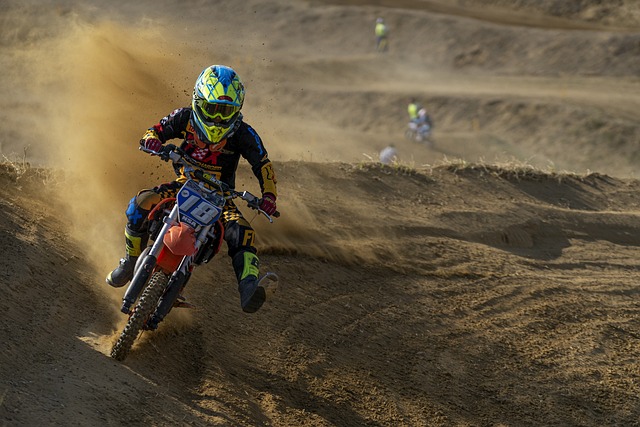As passionate motorcycle enthusiasts, we know that the clutch is the unsung hero of our rides, responsible for seamless gear changes and power delivery. However, even the most reliable clutches can wear out over time, leading to issues that can disrupt our enjoyment on the road. In this guide, we’ll dive deep into the world of motorcycle clutches, teaching you how to spot signs of trouble, perform crucial diagnostic tests, and undertake maintenance measures to keep your clutch in top-notch condition.
The Vital Role of a Motorcycle Clutch
Before we delve into diagnosing clutch problems, let’s understand the clutch’s fundamental role in our motorcycles. The motorcycle clutch is a critical component of the transmission system, responsible for engaging and disengaging the engine’s power from the wheels. When you squeeze the clutch lever, power from the engine is momentarily disconnected, allowing you to shift gears smoothly. It’s this precise control over power delivery that makes the clutch a cornerstone of every rider’s experience.
Motorcycle clutches come in various types, each with its unique characteristics. The most common types are wet clutches and dry clutches. Wet clutches are bathed in oil for cooling and lubrication, making them common in street bikes. On the other hand, dry clutches, found in some high-performance motorcycles, operate without oil immersion. Understanding your motorcycle’s clutch type is essential for effective maintenance and troubleshooting.
Common Signs of a Failing Clutch
Slipping Clutch
One of the most noticeable signs of a failing clutch is a slipping clutch. When you twist the throttle and accelerate, but your motorcycle’s speed doesn’t match the engine’s RPM, it’s a clear indication of a slipping clutch. This phenomenon occurs when the clutch fails to engage fully, causing power loss between the engine and the wheels. Riding with a slipping clutch not only diminishes performance but can also lead to overheating and further damage.
To diagnose a slipping clutch, start by accelerating gently in a higher gear. If you notice the engine revving higher than usual without a proportional increase in speed, it’s likely a slipping clutch. Additionally, observe if the motorcycle hesitates or struggles during acceleration. A slipping clutch can have various causes, such as worn friction plates or an insufficiently adjusted clutch cable.
Strange Noises
Unusual noises emanating from your motorcycle can be early warning signs of clutch trouble. While diagnosing noises can be challenging due to the complex mechanical sounds of motorcycles, certain auditory cues can hint at clutch problems. Listen for sounds like grinding, clicking, or rattling when engaging the clutch or shifting gears.
It’s essential to differentiate between clutch-related noises and those caused by other mechanical issues. If you suspect clutch-related noises, consult a mechanic for a professional assessment. Ignoring strange clutch noises can lead to more extensive and costly repairs down the road.
Difficulty Shifting Gears
A motorcycle’s clutch plays a pivotal role in the smooth transition between gears. If you encounter difficulties shifting gears, it could indicate clutch issues. Problems may manifest as resistance or “notchy” gear shifts, making gear changes less fluid and potentially causing transmission damage.
Difficulty shifting gears can result from a variety of clutch-related problems, such as clutch cable misadjustments, worn-out clutch plates, or insufficient clutch fluid. When you experience gear-shifting difficulties, don’t delay in addressing the issue to prevent further damage to your motorcycle’s transmission system.
Diagnostic Tests and Inspection
Clutch Lever Play
Checking and adjusting clutch lever play is a fundamental step in clutch maintenance. Clutch lever play refers to the amount of free movement in the clutch lever before it starts to engage the clutch. Proper clutch lever play ensures that the clutch disengages and engages smoothly, allowing for comfortable gear changes.
To check clutch lever play, follow these steps:
- Start with your motorcycle on level ground and the engine off.
- Pull the clutch lever towards the handlebar.
- Measure the distance from the lever’s resting position to the point where you feel resistance. This distance is your clutch lever play.
- Refer to your motorcycle’s manual for the recommended clutch lever play specifications.
If your clutch lever play falls outside the recommended range, it’s crucial to adjust it to meet the manufacturer’s guidelines. An improperly adjusted clutch lever play can lead to clutch slippage and premature wear.
Fluid Leakage
Fluid leakage around the clutch housing can be a visible sign of clutch trouble. The clutch system relies on hydraulic fluid to transfer force from the clutch lever to the clutch plates. Any leakage in the hydraulic system can lead to a loss of clutch function and decreased performance.
Inspect the area around the clutch housing, clutch master cylinder, and clutch slave cylinder for signs of fluid leakage. Look for damp spots, puddles, or any visible fluid on these components. If you discover fluid leakage, it’s crucial to address the issue promptly. Check the condition of the clutch hydraulic lines, seals, and reservoir for potential leaks and wear.
Regularly monitoring your motorcycle for fluid leakage can help you identify clutch issues early, preventing extensive damage and costly repairs.
Maintenance and Preventive Measures
Regular Clutch Maintenance
To keep your motorcycle’s clutch in optimal condition, it’s essential to perform regular maintenance. Here are some maintenance tasks to include in your routine:
- Clutch Cable Lubrication: Lubricate the clutch cable to ensure smooth lever action. Apply a suitable cable lubricant to prevent cable wear and friction.
- Clutch Lever Adjustment: Periodically check and adjust clutch lever play according to your motorcycle’s specifications. Follow the manufacturer’s guidelines for proper adjustment.
- Fluid Inspection: Regularly inspect the clutch hydraulic system for fluid levels and signs of leakage. Maintain the recommended fluid level and address any leaks immediately.
Tips for Extending Clutch Lifespan
Beyond routine maintenance, there are practices and riding techniques that can help extend your motorcycle clutch’s lifespan:
1. Smooth Gear Changes: Avoid aggressive or abrupt gear changes. Practice smooth and controlled clutch lever operation during gear shifts to minimize wear on the clutch plates.
2. Avoid Riding the Clutch: When waiting at traffic lights or in stop-and-go traffic, refrain from keeping the clutch partially engaged for extended periods. This can cause excessive heat buildup and premature wear.
3. Proper Warm-Up: Allow your motorcycle’s engine to warm up before riding. Cold starts and immediate high-rev riding can strain the clutch and lead to premature wear.
4. Gear Selection: Select the appropriate gear for your riding conditions. Riding in too high or too low a gear can stress the clutch. Maintain a balance between engine power and gear selection.
5. Clutchless Shifting: Learn and practice clutchless upshifting, which minimizes clutch wear during gear changes.
By adopting these preventive measures and following proper maintenance routines, you can significantly prolong the life of your motorcycle’s clutch, ensuring consistent performance and a smoother riding experience.
When to Consult a Mechanic
While routine maintenance and troubleshooting can address many clutch-related issues, there are situations where consulting a motorcycle mechanic is advisable:
1. Persistent Problems: If clutch issues persist despite maintenance and adjustments, it’s essential to seek professional diagnosis and repair.
2. Unusual Noises: Unexplained or unusual clutch-related noises should be inspected by a mechanic to identify and address potential problems.
3. Fluid Leaks: Any signs of fluid leakage in the clutch hydraulic system require immediate attention from a qualified mechanic to prevent clutch failure.
4. Complex Repairs: If clutch repairs involve complex components, such as the clutch basket or hub, it’s best to entrust the work to a skilled mechanic with the necessary tools and expertise.
In conclusion, understanding how to tell if your motorcycle clutch is going out is essential for maintaining your bike’s performance and safety. Regular maintenance, thorough inspections, and adherence to preventive measures can go a long way in extending your clutch’s lifespan. Remember that addressing clutch issues promptly can prevent more extensive and costly repairs down the road.
For more expert insights, tips, and the latest updates on motorcycle maintenance and riding, subscribe to our newsletter. Stay informed, ride responsibly, and enjoy the thrill of the open road.



